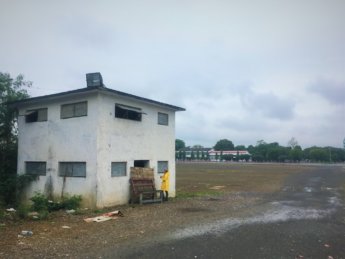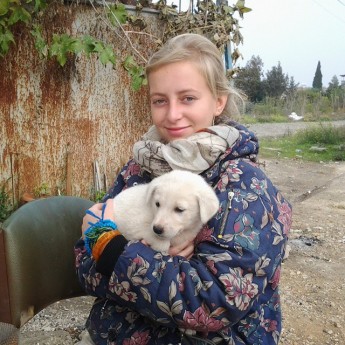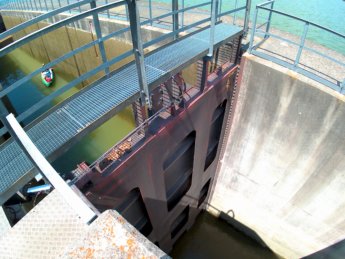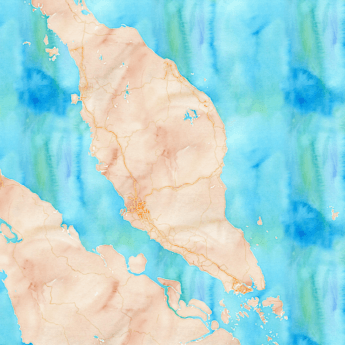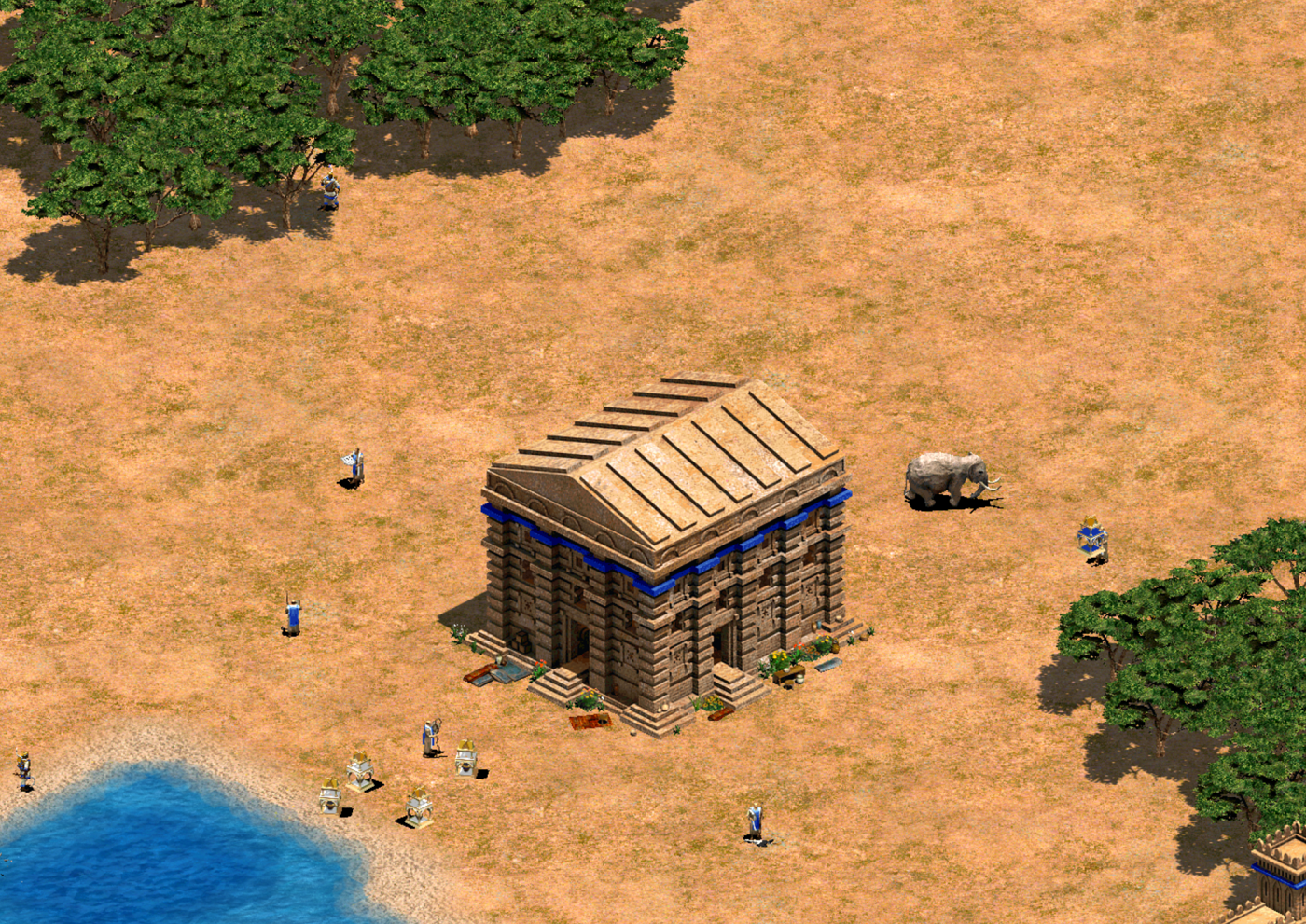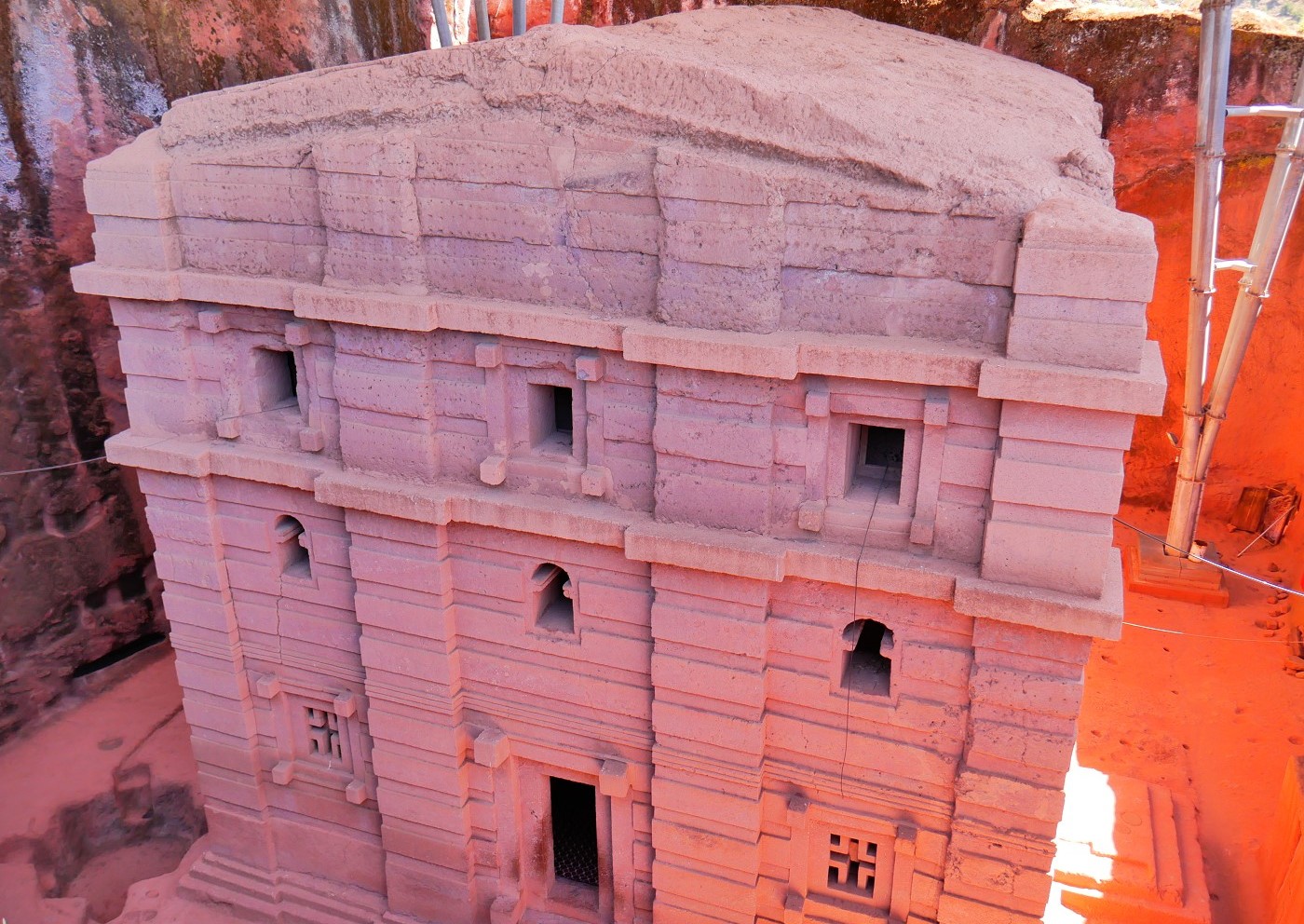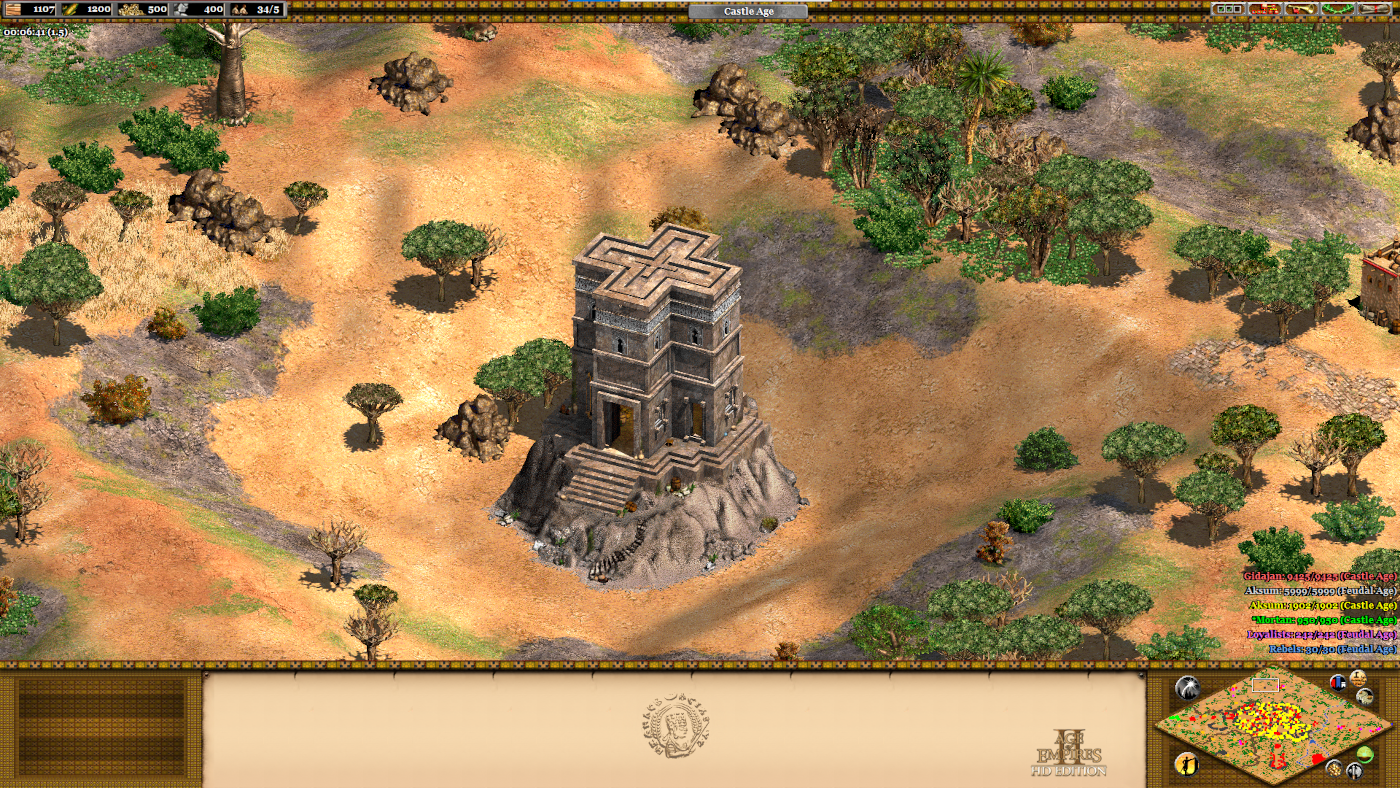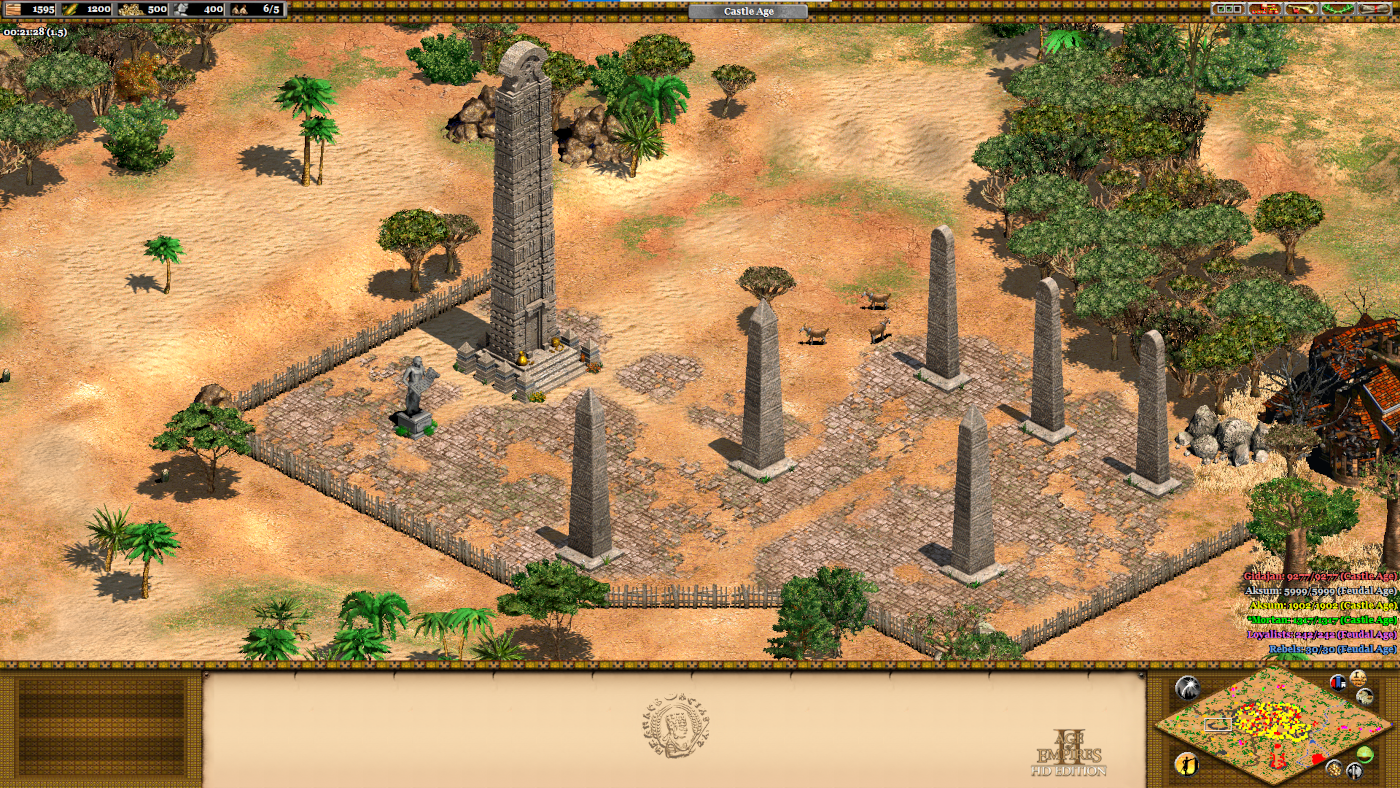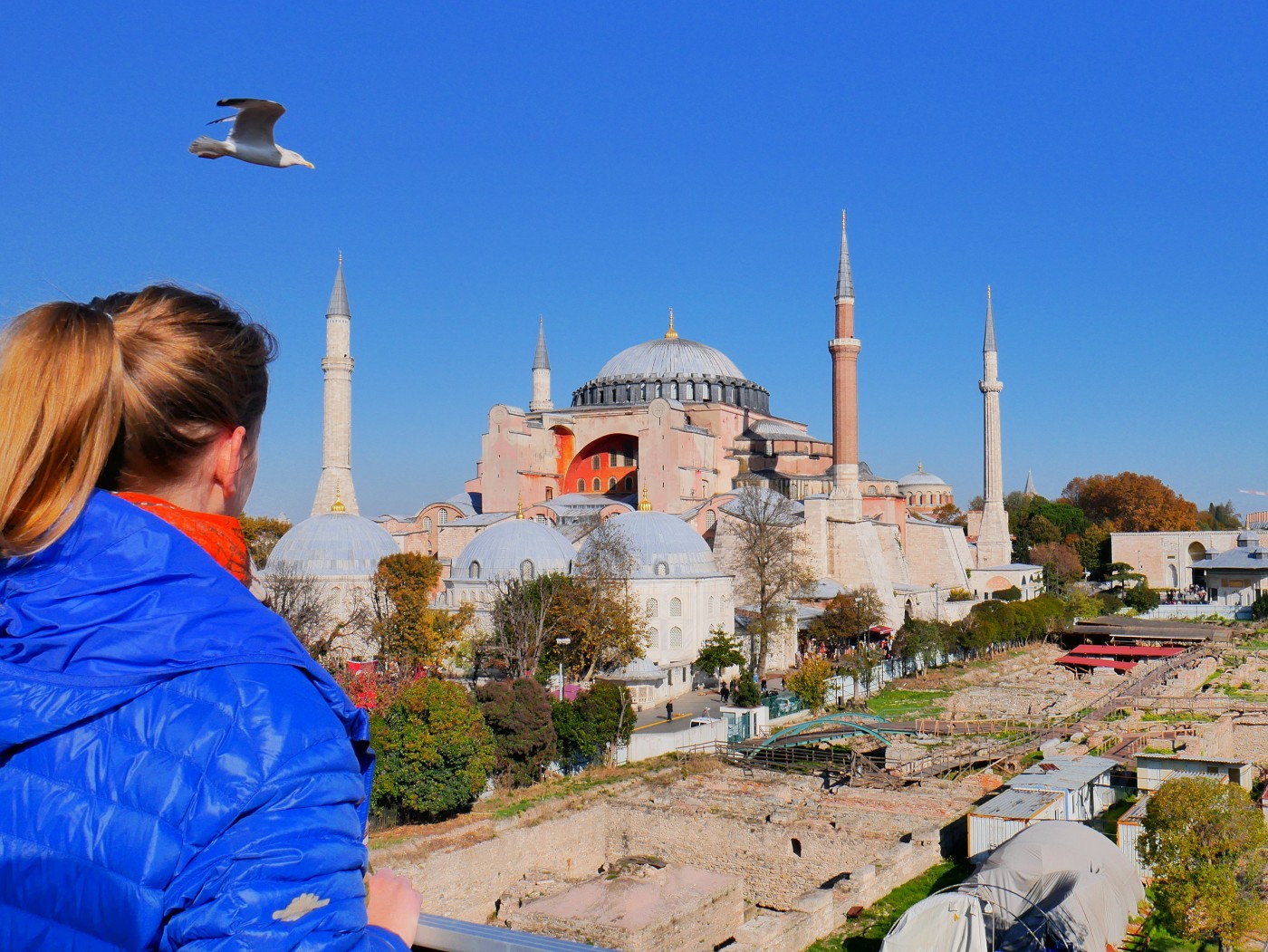
We visited the wonder on the 7th and the 10th of February, 2023. Bete Amanuel is a spectacular church carved out of a single rock in northern Ethiopia. It makes an appearance in the video game Age of Empires II as the wonder of the Ethiopian civilization.
Contents
One of the Reasons We’re in Ethiopia
Our motivation to travel to Ethiopia after Madagascar came from two things: we love Ethiopian food and I knew there was an Age of Empires II wonder to visit here. The wonder is called Bete Amanuel and it’s a 900-year-old church carved out of a single rock. It’s located in Lalibela, a tourist-friendly city 340 kilometers due north of the modern Ethiopian capital Addis Ababa.
After arriving in Addis Ababa, we inquired about how to get to Lalibela. We prefer to travel overland, but the bus to Lalibela would take two days to arrive; the road journey has a very challenging geography. In the end, we decided to first visit Bahir Dar at Lake Tana by coach before taking a small van to Lalibela. We arrived on the 5th of February.
The next day, we met with a recommended tour guide named Mas at our hotel. We talked about what we wanted to see and I expressed my wish to mostly see Bete Amanuel. He said that’s his favorite church. He asked why Bete Amanuel and I went off a tangent about this video game in which you play the Ethiopian civilization and one way to beat the enemies is by building a wonder and keeping it up for 200 years to show you’re better. Either way, the conclusion was that he’d make a nice itinerary to all 11 churches for the next day with special attention to the reason we’re here.
That evening, we started playing the campaign of Yodit in Age of Empires II.
Want to visit Lalibela with Mas?
Get in contact with Mas if you’re curious about the 11 rock-hewn churches of Lalibela or other places in Ethiopia. To unlock his phone number, please sign up for my newsletter with your email address:
First Visit to Bete Amanuel
On the 7th of February, we did a big guided tour of the three church sites of Lalibela. To read about the other 11 Rock-Hewn Churches of Lalibela, come read that article.
After 9 other churches and with two more to go, Mas was getting really excited on my behalf. I also knew what was coming up next, though I did not know the complicated route between Bete Merkorios and Bete Amanuel. We followed Mas through some more small rocky rooms till we were at middle height with the church. In the brightness, there were stairs leading down to the front entrance of Bete Amanuel, but the vista of the church was quite perfect from this height.
We appreciated the level of precision and perfection of Bete Amanuel from the outside for a bit before entering. Though I had not felt much with the other churches that are also covered in a ‘protective’ shelter, the grotesqueness of this church’s sarcophagus was indeed marring. It didn’t make me angry since I was very happy to finally be here, but I was trying to find solutions better than this one.
We once again took our shoes off to enter. Inside the Bete Amanuel, it’s very cozy. Mas started off by showing the 800-year-old door of this church. He shone his flashlight on the walls and ceiling. At the center was a priest and Mas took some photos of us with him and some of the prayer canes (called dula or mequamia). We spent some more time inside till it was time to enjoy the vistas from the outside.
The straightness of the walls and the sharp edges are truly amazing. If you’re carving a church out of one single stone, there’s really not any room to mess up. Mas told us about some damage to the roof, though we didn’t actually visit the upper part where you can see the roof.
We exited Bete Amanuel via a round hole at one of the other corners of the church, from where there was a path through a small canyon and tunnel to Bete Abba Libanos. But we promised to come back here at another time.
Second Visit to Bete Amanuel
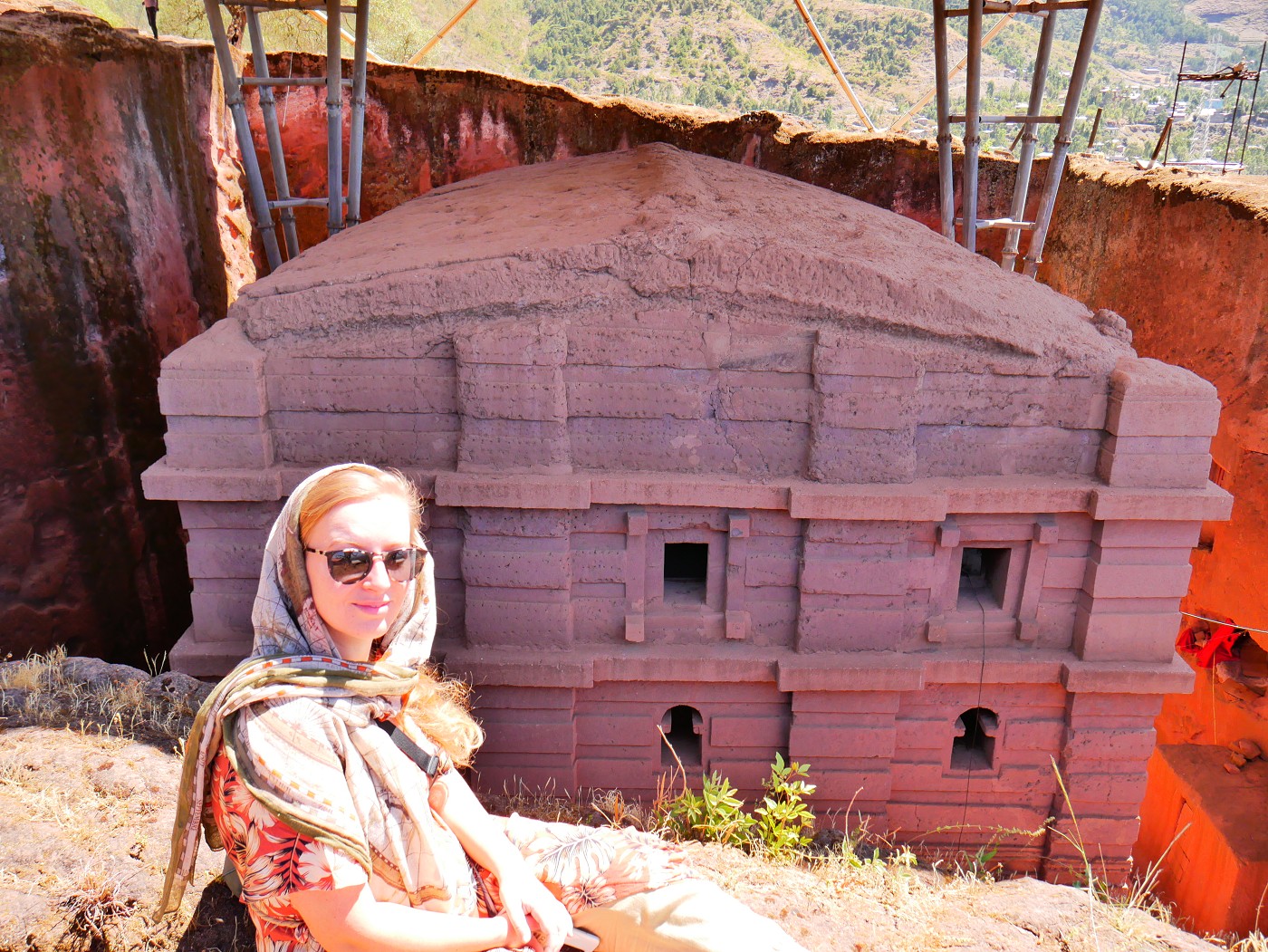
For our second visit, we wanted to make sure to visit in the morning. I put on my nice dress and we took a bajaj up the hill to one of the other entrances to the Southeastern Group. From there, it was still a bit of an uphill walk to one of the entrances that first goes to Bete Abba Libanos church. There was a group of worshippers there and a man who checked our ticket. Going without a guided tour was a bit interesting because suddenly we had trouble finding the way to Bete Amanuel. An old lady pointed us in the right direction and we found the skinny tunnel again that leads to the exterior trench of Bete Amanuel. From there, we made it to the round hole in the southeast corner.
Bete Amanuel looked soft in the cool morning light. A young boy approached us to check our tickets and then tried to exchange a €2 coin with us. He eventually left us alone. There was a priest sitting outside and another priest we recognized from our last visit went inside. We took nice photos outside of the church in relative peace. A few domestic tour groups wandered through and around the church. There was one man circumambulating the building and prostrating at the steps of the temple. A woman in all black and with a sad expression did the same.
After taking the photos, I circumambulated the Bete Amanuel barefoot and took some nice videos. We entered the church one last time before our expensive ticket expires to experience its quiet interior. Then we took the other exit where we found a cool-looking window with a view of the front of the church.
The last thing we did was hike to the top of the rock to see the giant trench the builders needed to dig to create Bete Amanuel. The cool thing about this rectangular chasm is that there’s no fence whatsoever to stop you from falling some 24 meters down. I’m rather careful with gaping holes in the ground and their edges, so the photos I took from there were rather risk-averse. Jonas took a few photos of me sitting on the edge and pointed out that it’s the Age of Empires II angle from one of the corners. Perhaps a decade ago I would have sat there with my feet dangling over the edge.
Taking our sweet time here made it a great and peaceful visit.
Bete Amanuel as Represented in Age of Empires II
Hover over this picture with your mouse on computer 🖱️ or tap and hold on phone 👆 to see the comparison.
Warning: if you keep reading there will be spoilers about the campaign. If you don’t want to read those, first play the campaign and then get back here.
AoE2 Bete Amanuel vs. the Real Deal
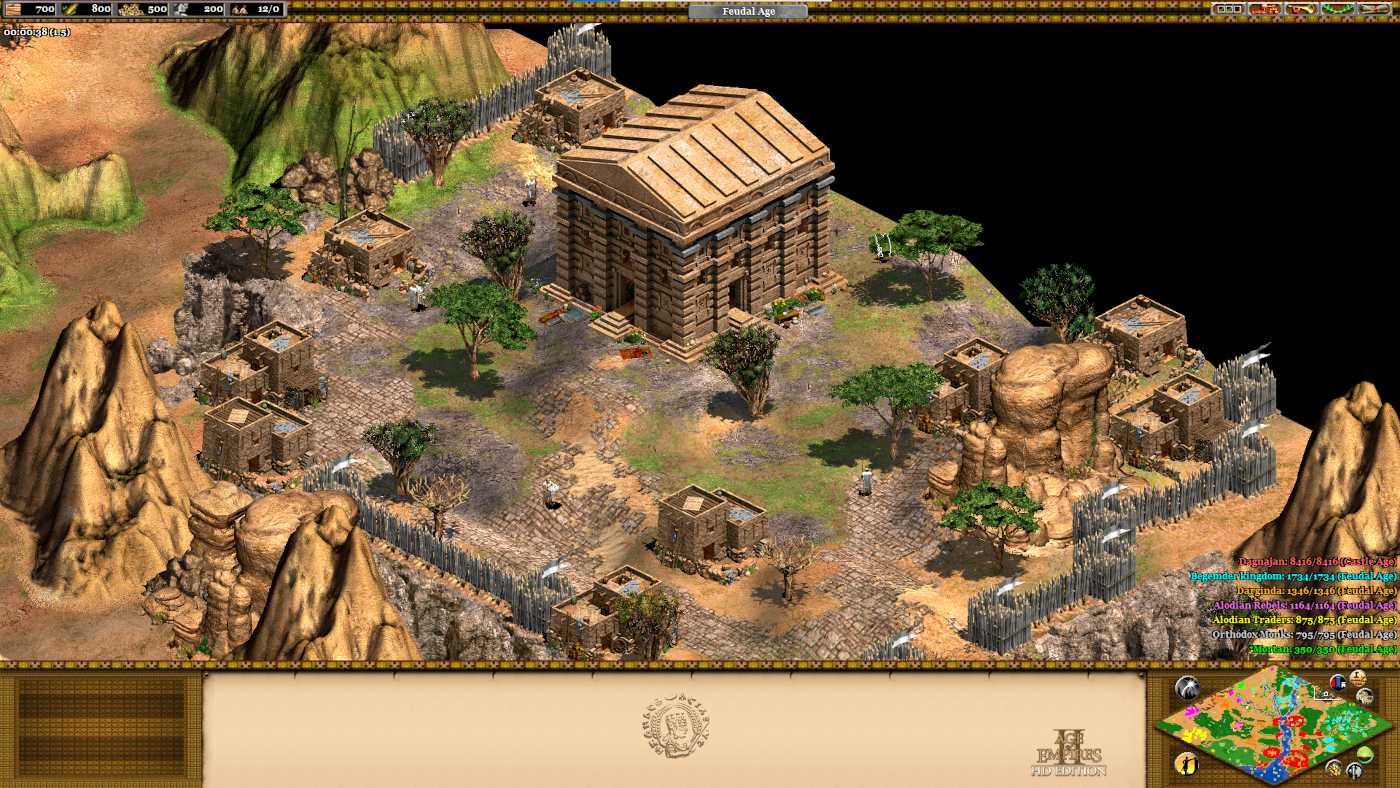
The in-game wonder looks like a Bete Amanuel right after they finished building it. Because of the game angle, there’s an emphasis on the roof. In the 21st century, the roof of Bete Amanuel is, unfortunately, one of its less appealing angles not only because of its ugly cover, but because the roof itself has seen better days. All in all, I think the game designers made an accurate representation of Bete Amanuel that makes it instantly recognizable.
In the campaign, Bete Amanuel appears in the third chapter. Bete Amanuel is not placed inside a hole in the ground like it is in real life—even though the game makers could have implied that. More on that in the context of St. George later. Instead, the Bete Amanuel is at the northeastern edge of the map. It’s not a very glorious position. Orthodox monks and a palisade wall surround the wonder. Unfortunately, this is the only campaign appearance. But there’s a bonus!
Campaign appearance of Bete Amanuel
So if you want to play the Ethiopian civilization in Age of Empires II, you’ll need the African Kingdoms expansion set. The campaign is named “Yodit” (aka Gudit or ጉዲት) after the protagonist. Please note that Yodit is not a good character and that Ethiopians today still have a strongly negative opinion of her as a Pagan, Jewish or Muslim invader, destroyer of Christian culture, and mass murderer. One of her nicknames is “terrible beast”. She reigned between 842 and 882 (±8 years) according to some sources, while she gained control of Axum in 960 according to others.
Since I can only know about Yodit from half-assed translated sources and Wikipedia, I’m just going to focus on Yodit’s representation in Age of Empires II instead of what she truly might have been. The campaign tells her story in five scenarios:
- Path of Exile
We’re told the story of Yodit’s 40-year reign through the eyes of a curious child named Daniel, who asks his dad to tell her story. This narration plays 30 years after Yodit’s rise to power.
Princess Yodit’s cousin King Gidajan and her nephew frame her for stealing a religious object, for which she is imprisoned. Yodit’s goal is to jailbreak Axum city and the Axumite Empire with her loyal armed buddy Samuel. She eventually escapes all of Ethiopia to live in what is today Eritrea, Sudan, and Egypt in exile. The map shows the edges of the Axumite Empire, though I could not pinpoint exactly where this is supposed to take place. - The Right Partner
In exile, she tries to gain power by teaming up with a Syrian prince called Zanobis. But in order to seduce him in a progressive way, she needs to complete five quests to make him love her. Some of these quests are about helping the Beja Nomads native to this area to earn their cooperation. One named place is Qasr Ibrim, which is today almost flooded by Lake Nasser in southern Egypt. Red Sea pirates constantly attack the peninsula today known as Ras Banas. Eventually, you have to destroy one of the fortified towns to marry Zanobis. - A Fallen Crown (Bete Amanuel appears!)
Five years later, Yodit is stronger than ever and an opportunity arrives to undermine Dagnajan’s power. The Axumite Empire is about to overrun the Kingdom of Darginda, and Yodit needs to stop this and ambush Dagnajan. There are several ways to undermine the power of the Axumite Empire, one of which is by attacking Bete Amanuel (called an “important monastery” for the Axumite Empire in the game). Yodit obviously never destroyed Bete Amanue. So feel free to not destroy the wonder of the Ethiopians.
In the end, you kill Dagnajan and his empire begins to crumble under his feuding sons, one of whichby the name of Gidajan. - Broken Stelae (random stelae fields appearance)
The body of Dagnajan is never recovered. Now is the time for Yodit to strike the Axumite Empire. Yodit has a base south of the city of Massawa (today in Eritrea), which Gidajan controls. Massawa in the game is located north of the seasonal river (Uissa) compared to where Massawa is today. The goal for Yodit is to slowly take over the region’s resources – which are represented by stelae dotted across the map – and destroy Gidajan’s monasteries for loot. Finally, it’s necessary to conquer the fortress city of Massawa. - Welcome Home (Obelisk of Axum + Axum Stelae Field + St. George appearance)
In a true “Wait, are we the baddies?” fashion, the narrator of the story changes from Daniel’s dad to a storyteller called Tariku who actually fought against Yodit’s troops 30 years ago.
Yodit’s final goal in her rise to power is to conquer her home city of Axum. In a way, this story is eerily similar to a certain contemporary pop-culture reference… something about a Mad Queen. Yodit destroys the barricaded Temple of Zion in the city of Axum where Ethiopian Emperors were crowned. The battle is in close quarters in the streets of Axum, probably resulting in many civilian casualties who are neutral. Yodit receives more support in her conquest throughout the game. Finally, Yodit’s forces destroy Gidajan’s castle and kill him, which veteran Tariku saw with his own eyes. He says that her rise to the throne and the start of the Zagwe Dynasty was a bloody mess and not a glorious adventure like the boy thought it was.
Why Bete Amanuel and not the arguably more iconic St. George?
Interestingly, both the St. George church (marked as a ‘palace’) in Lalibela and the Axumite Obelisks in Axum make an appearance in the final scenario. However, they are not objects you can interact with in the game, just like mountains. The St. George church is located northwest of the city of Axum and the stelae are located southwest of Axum close to one of the city’s entrances.
The thing is, the makers of Age of Empires II did create the St. George church as the original wonder. But for some reason, they switched it out with the Bete Amanuel. Either way, you can visit both churches on the same expensive ticket.
Want to Visit Bete Amanuel Virtually?
Here’s a website with a 3D model of the church.




